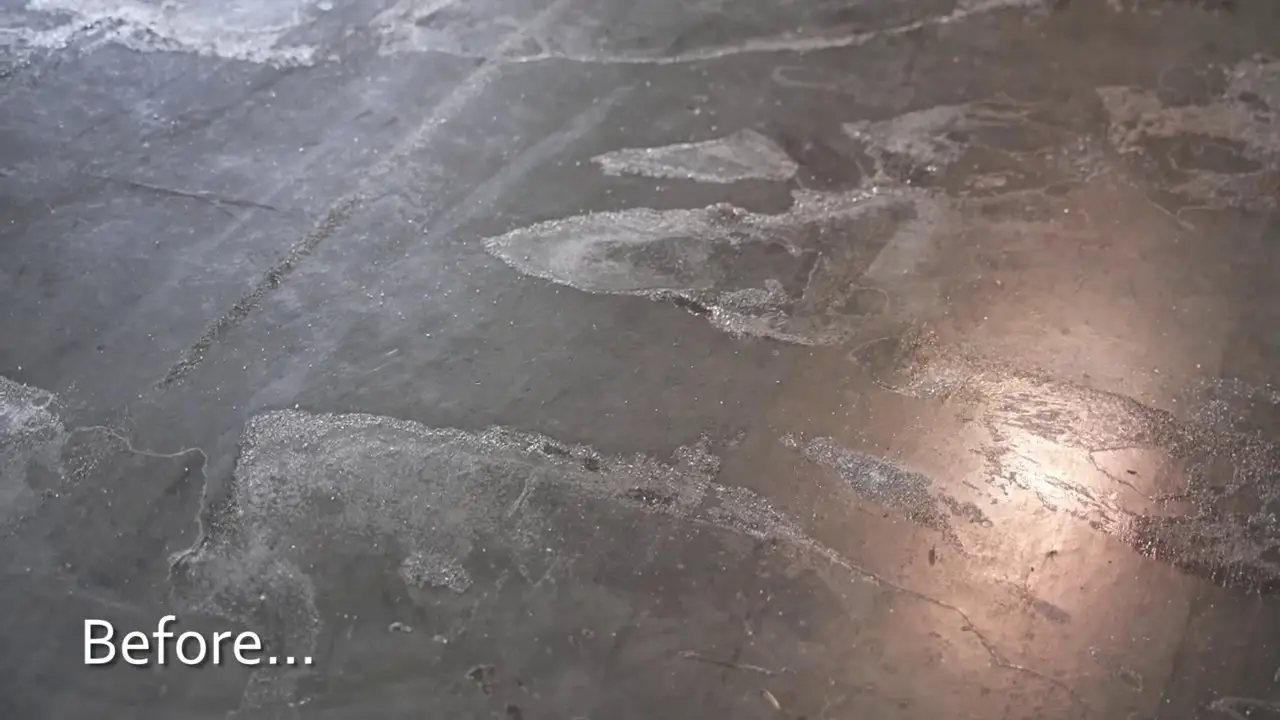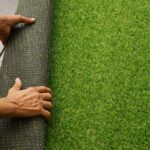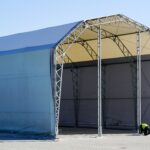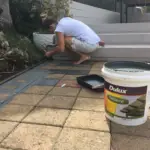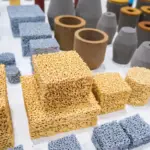So, you recently got your concrete finished in the basement and now with staining you start wondering “how to stop concrete from sweating?”.
Concrete staining is moisture buildup or condensation of concrete surface that can result in range of issues like slipperiness, mold or mildew growth, corrosion of embedment, surface damage and staining.
What’s concrete sweating?
Concrete sweating typically occurs when the moisture gets trapped inside the concrete matrix and then comes out to the surface. This can happen in any area with high humidity or if the area has temperature fluctuations.
What areas are mostly susceptible for concrete sweating?
As an expert, I’ve seen a lot of homeowners getting worried of concrete sweating in garages, basements, and warehouses. These areas had a lot of concrete and gets perfect match with poor ventilation, high level of humidity, and condensation on the concrete surface.
You can however use number of techniques to stop concrete from sweating. And I recommend following these techniques especially in areas I’ve explained earlier.
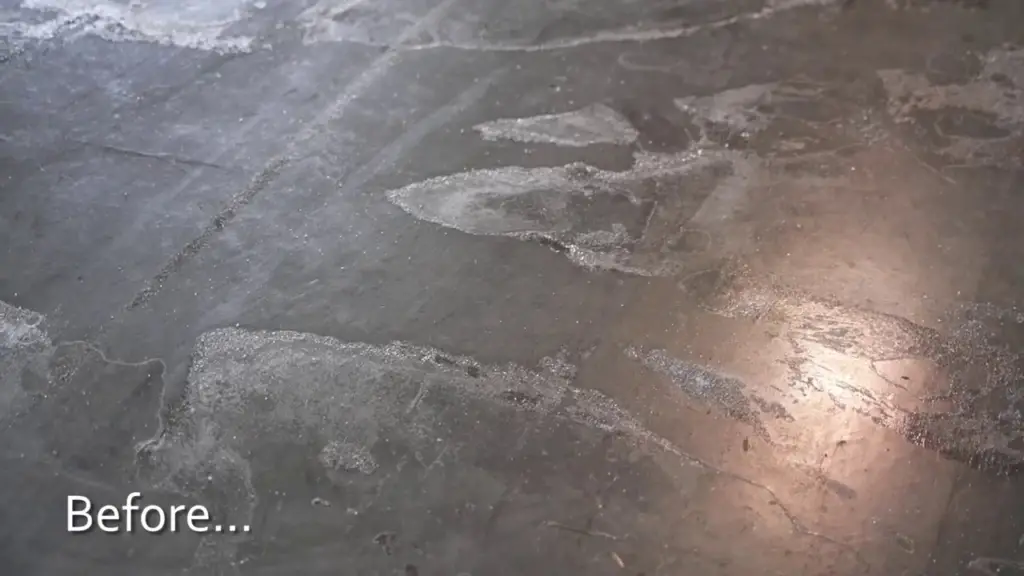
Signs and effects of concrete sweating
Here are some warning signs and potential effects of sweating on concrete:
- Slipperiness: Moisture on the surface of concrete can make it slippery, creating a safety hazard.
- Mold and Mildew Growth: Moisture trapped in concrete can create an ideal environment for mold and mildew growth, not only damaging the material itself, but also posing health risks to those exposed to it.
- Corrosion of embedded metals: If the concrete contains metals such as rebar, moisture can cause them to corrode and cause structural damage.
- Surface Damage: Excess moisture can lead to surface damage to concrete, such as cracking, scaling or spalling.
- Staining: Moisture on the surface of concrete can cause staining, particularly if it contains minerals or other impurities.
- Reduced Durability: Over time, moisture can weaken concrete and decrease its durability, leaving it more vulnerable to damage from freeze-thaw cycles, chemicals, and other environmental elements.
Overall, sweating on concrete can have detrimental effects to its structural integrity and aesthetic. Preventing sweating and addressing moisture problems promptly are the best ways to minimize these negative impacts and extend the lifespan of your concrete.
Also Read: Does WD40 stain concrete?
How to stop concrete from sweating?
Here are a few steps you can take to prevent concrete from sweating:
Like Us on Facebook!
Use a Vapor Barrier: Before pouring concrete, lay down a layer of plastic or other vapor barrier material over the ground to prevent moisture from seeping into the mix.
Subscribe Us on YouTube!
Improve Drainage: If the area around concrete isn’t draining properly, moisture can build up and lead to sweating. Consider installing a drainage system or gradeing the area for improved water flow.
Use waterproofing coatings: Applying a waterproof coating to the surface of concrete can help keep moisture at bay and help prevent it from seeping into the structure.
Increase ventilation: For areas exposed to high humidity or moisture, such as basements or bathrooms, improving ventilation can help reduce sweating. This can be accomplished by installing fans or opening windows.
Seal cracks and joints: Concrete cracks and joints can allow moisture to seep in, leading to sweating. Applying an appropriate sealant in these areas helps prevent this from occurring.
Allow for Proper Curing Time: Allowing concrete to cure properly helps reduce sweating. Make sure the mixture has ample time to cure before subjecting it to heavy foot traffic or other stresses.
Also Read: Does concrete expand when it dries?
Will sealing concrete prevent sweating?
Sealing concrete can potentially prevent sweating, though its effectiveness depends on the type of sealant and conditions of the surface. Here are some reasons why sealing concrete may or may not help with sweating:
Why Sealing Concrete Can Prevent Sweating:
- Creates a Barrier: Sealing concrete can create an impenetrable shield that stops moisture from penetrating the surface. This helps reduce moisture that reaches concrete’s surface, thus decreasing or eliminating sweating.
- Reduces Porosity: Concrete is a porous material, meaning it absorbs moisture from its environment. Sealing concrete helps reduce this permeability and makes it less vulnerable to moisture absorption – helping prevent sweating.
- Enhances Durability: Sealants can further increase the longevity of concrete by shielding it from damage caused by moisture, chemicals and other substances. By shielding your work, a sealant helps keep its structural integrity and prevents sweating.
- Enhances Appearance: Sealing concrete can also give it a smooth, glossy surface that’s easy to clean and maintain – particularly useful for garage floors which tend to get spills and stains. This process also improves safety: When sealing concrete, make sure the area around the sealant has plenty of ventilation in order to prevent cracking or staining.
- Provides UV Protection: Certain sealants offer UV protection, which can help to prevent fading and discoloration of concrete surfaces. Furthermore, by maintaining the integrity of the surface, these sealants help prevent sweating.
Reasons when sealing will not prevent sweating
Reasons why sealing concrete may not prevent sweating:
- Poor Application: If the sealant is not applied evenly or fails to adhere well to the surface of concrete, it may not be effective at preventing sweating.
- Inadequate Surface Preparation: For a sealant to be effective, the concrete must be cleaned and prepared prior to applying it. Without this preparation, the sealant may not adhere properly and prevent sweating.
- Incompatible with Environment: Some sealants may not be suitable for certain environmental conditions, such as high humidity or extreme temperatures. In these instances, the sealant could break down or become less effective over time, potentially leading to sweating.
- Not a permanent solution: Sealing concrete is not an end-all cure for sweating, and it may need to be reapplied periodically in order to remain effective.
- Sealing Not Recommended for All Concrete Types: Some types of concrete may not be suitable for sealing due to their composition and condition. In such cases, sealing the surface won’t prevent sweating and could even cause further harm.
Further Read: Is concrete homogeneous or Heterogeneous (Answer with Reasons)?

